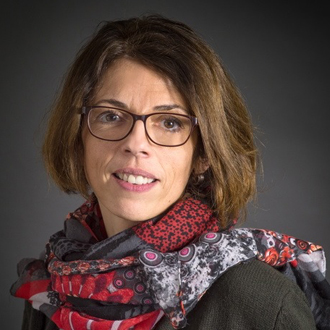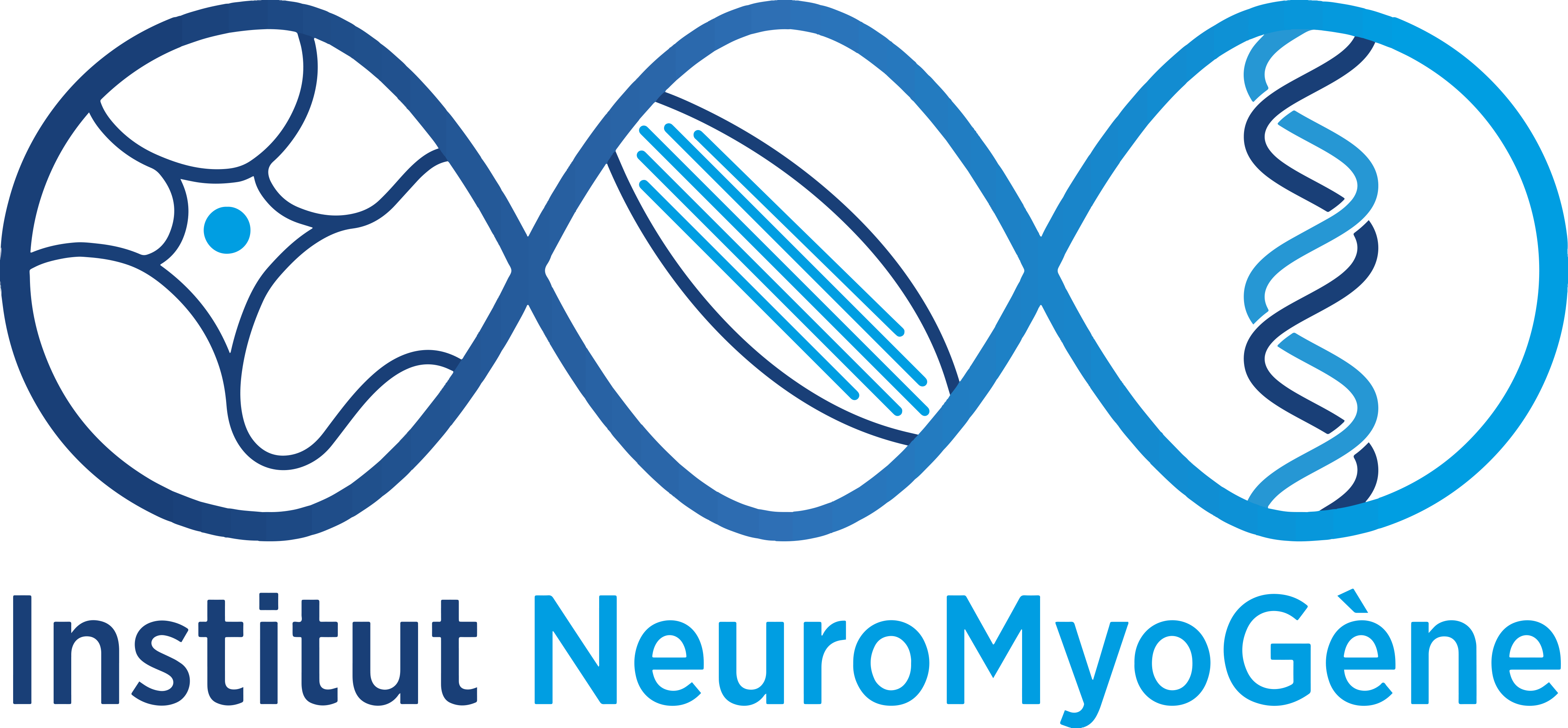Our goal is to identify new functions for the cells located in the microenvironment of muscle cells beside their canonical properties (e.g., regulation of inflammation for macrophages, supply of oxygen and nutriments for vessel cells) and how muscle stem cells and myofibers are controlled by their closest environment in both normal and pathological contexts. The identification of new molecules or novel functions of already known pathways are the basis for expanding our current understanding about skeletal muscle homeostasis and its pathophysiology.
WWW.MUSCLESTEM.COM
skeletal musclemuscle stem cells microenvironment macrophages vessels myopathies

TEAM
- Bénédicte CHAZAUD
SENIOR RESEARCHER, INSERM - Natacha BOYER
RESEARCH ASSISTANT, CNRS - Léa DELIVRY
RESEARCH ASSISTANT, CNRS - Aurélie FESSARD
RESEARCH ASSISTANT, UCBL - Laure GALLAY
MD/PhD, CCA INSERM - Luca GARCIA
RESEARCH ASSISTANT, CNRS - Ananga GHOSH
POST-DOC - Stéphanie GOBERT
ASSISTANT PROFESSOR, UCBL - Julien GONDIN
SENIOR RESEARCHER, CNRS - Jules GUILLEMAUD
PhD STUDENT - Gaetan JUBAN
RESEARCHER, INSERM - Camille KOENIG
PhD STUDENT - Charlotte LAGARRIGUE
PhD STUDENT - Eurydice LAMIRAULT
PhD STUDENT - Orane MERCIER
PhD STUDENT - Nazanine MODJTAHEDI
SENIOR RESEARCHER, CNRS - Antonio MORETTA
POST-DOC - Lucia ROUHLING
MASTER 2 - Michèle WEISS-GAYET
RESEARCH ASSISTANT, CNRS
PROJECTS
Stem cells are important in the maintenance and repair of many tissues all along the life span. It is the case in skeletal muscle, which presents high plasticity and regenerative properties to keep constant physiological parameters (homeostasis). Normal skeletal muscle mobilizes tissue-associated endogenous stem cells, mainly satellite cells, to repair damaged myofibers. Indeed, muscle stem cells sustain regeneration that is crucial for muscle homeostasis, as well as the self-renewal mechanisms that maintain their pool constant.
A key issue we address is the tissue environment in which muscle stem cells are activated. Environment plays important roles in the behavior of muscle stem cells and myogenic cells, although the mechanisms are poorly unknown. Various cell types in the vicinity of stem cells communicate with each other to correctly drive regeneration. We explore the roles of immune cells (inflammation), endothelial and peri-endothelial cells (angiogenesis) and interstitial cells (fibrosis) on myogenic cell fate in normal healthy regenerating muscle and during muscular dystrophies. Indeed, myopathies are characterized by the alteration in the environment of muscle stem cells, such as the presence of chronic inflammation and fibrosis, which are detrimental for both tissue repair and cell therapies.
Muscle stem cell neighboring (B. Chazaud)
Skeletal muscle regeneration is associated with the presence of macrophages. Two main inflammatory types of macrophages are present during skeletal muscle regeneration. Soon after injury, inflammatory monocytes enter into the damaged muscle and these inflammatory macrophages stimulate the proliferation of muscle stem cells. Later, they switch their phenotype into anti-inflammatory macrophages that sustain myogenic differentiation and myofiber growth. Macrophages can be considered as a stromal support for myogenic cells that helps the sequential steps of skeletal muscle regeneration. Our research focuses on the molecular mechanisms that regulate the inflammatory status and functions of macrophages during this process. We also study macrophage functions during myopathies, where they are associated with fibrosis.
We also investigate the interactions between muscle stem cells and vessel cells, since satellite cells are located close to capillaries in normal muscle. Endothelial cells and myogenic precursor cells interact to stimulate each other growth and differentiation. On the contrary peri-endothelial cells (smooth muscle cells) promote the self-renewal and maintain into quiescence of myogenic cells. We aim at understanding the molecular regulation of the coupling between angiogenesis and myogenesis during skeletal muscle regeneration, as well as identifying whether these interactions are altered – and how – in various myopathies.
Skeletal muscle contraction and myofiber microenvironment (J. Gondin)
Skeletal muscle is a remarkably plastic tissue that adapts to changes in contractile activity. This plasticity widely relies on the interactions between the myofiber, the muscle stem cells and their environment. We investigate how an increase in muscle activity induced by repeated, rigorously controlled and non-traumatic electrical stimulation (i.e., neuromuscular electrical stimulation protocol or NMES) regulates stem cell fate and their interactions with environmental cells in both healthy and cachectic muscle (cancer and sepsis).
We also seek to understand how muscle regeneration occurs after unaccustomed/too intense muscle contractions. We have developed a mouse model allowing the modulation of muscle damage severity. We investigate the cellular mechanisms involved in muscle regeneration in relation to the severity of muscle damage and sex in a physiological context.
SELECTED PUBLICATIONS
- Kinetics of skeletal muscle regeneration after mild and severe muscle damage induced by electrically-evoked lengthening contractions. Bernard C, Jomard C, Chazaud B, Gondin J. FASEB J. 2023 Sep;37(9):e23107. doi: 10.1096/fj.202201708RR.
- Macrophagic AMPKα1 orchestrates regenerative inflammation induced by glucocorticoids. Caratti G, Desgeorges T, Juban G, Stifel U, Fessard A, Koenen M, Caratti B, Théret M, Skurk C, Chazaud B, Tuckermann JP, Mounier R. EMBO Rep. 2023 Feb 6;24(2):e55363. doi: 10.15252/embr.202255363.
- Involvement of Type I Interferon Signaling in Muscle Stem Cell Proliferation During Dermatomyositis. Gallay L, Fermon C, Lessard L, Weiss-Gayet M, Viel S, Streichenberger N, Corpet A, Mounier R, Gitiaux C, Mouchiroud G, Chazaud B. Neurology. 2022 May 24;98(21):e2108-e2119
- Annexin A1 drives macrophage skewing to accelerate muscle regeneration through AMPK activation. McArthur S, Juban G, Gobbetti T, Desgeorges T, Theret M, Gondin J, Toller-Kawahisa JE, Reutelingsperger CP, Chazaud B, Perretti M, Mounier R. J Clin Invest, 2020 Mar 2;130(3):1156-1167
- AMPK Activation Regulates LTBP4-Dependent TGF-β1 Secretion by Pro-inflammatory Macrophages and Controls Fibrosis in Duchenne Muscular Dystrophy. Juban G, Saclier M, Yacoub-Youssef H, Kernou A, Arnold L, Boisson C, Ben Larbi S, Magnan M, Cuvellier S, Théret M, Petrof BJ, Desguerre I, Gondin J, Mounier R, Chazaud B. Cell Rep, 2018, 25:2163-2176
- Myogenic Progenitor Cells Exhibit Type I Interferon-Driven Proangiogenic Properties and Molecular Signature During Juvenile Dermatomyositis. Gitiaux C, Latroche C, Weiss-Gayet M, Rodero MP, Duffy D, Bader-Meunier B, Glorion C, Nusbaum P, Bodemer C, Mouchiroud G, Chelly J, Germain S, Desguerre I, Chazaud B. Arthritis Rheumatol, 2018, 70:134-145
- Macrophage-derived superoxide production and antioxidant response following skeletal muscle injury. Le Moal E, Juban G, Bernard AS, Varga T, Policar C, Chazaud B, Mounier R. Free Radic Biol Med, 2018, 20;120:33-40
- Coupling between Myogenesis and Angiogenesis during Skeletal Muscle Regeneration Is Stimulated by Restorative Macrophages. Latroche C, Weiss-Gayet M, Muller L, Gitiaux C, Leblanc P, Liot S, Ben-Larbi S, Abou-Khalil R, Verger N, Bardot P, Magnan M, Chrétien F, Mounier R, Germain S, Chazaud B. Stem Cell Reports, 2017, 9:2018-2033
- AMPKa1-LDH pathway regulates muscle stem cell self-renewal by controlling metabolic homeostasis. Theret M, Gsaier L, Schaffer B, Juban G, Ben Larbi S, Weiss-Gayet M, Bultot L, Collodet C, Foretz M, Desplanches D, Sanz P, Zang Z, Yang L, Vial G, Viollet B, Sakamoto K, Brunet A, Chazaud B, Mounier R. EMBO J, 2017, 36:1946-1962
- Macrophage PPARγ, a Lipid Activated Transcription Factor Controls the Growth Factor GDF3 and Skeletal Muscle Regeneration. Varga T, Mounier R, Patsalos A, Gogolák P, Peloquin M, Horvath A, Pap A, Daniel B, Nagy G, Pintye E, Póliska S, Cuvellier S, Larbi SB, Sansbury BE, Spite M, Brown CW, Chazaud B, Nagy L. Immunity, 2016, 45:1038-1051
- AMPKalpha1 regulates macrophage skewing at the time of resolution of inflammation during skeletal muscle regeneration. Mounier R, Theret M, Arnold L, Cuvellier S, Bultot L, Goransson O, Sanz N, Ferry A, Sakamoto K, Foretz M, Viollet B, Chazaud B. Cell Metab, 2013, 18:251-264
FUNDING
- Actions Marie Skłodowska-Curie
- Agence Nationale de la Recherche
- Argenx
- Association Française contre les Myopathies
- Cancéropôle Lyon Auvergne Rhône-Alpes (CLARA)
- CNMD Ottawa / INMG
- CNRS
- European Joint Programme on Rare Diseases (EJPRD)
- Fondation pour la Recherche Médicale
- Fondation ARC pour la recherche sur le cancer
- GDR CNRS Sport et Activité Physique
- INSERM
- Ligue Contre le Cancer
- Minoryx therapeutics
- Nestlé Health Science
- Université de Lyon – Université Claude Bernard Lyon 1

![]()












Adresse
Institut NeuroMyoGène
UCBL – CNRS UMR 5261 – INSERM U1315
Faculté de Médecine et de Pharmacie – 3ème étage – Couloir AH
8 Avenue Rockefeller
F-69008 Lyon


